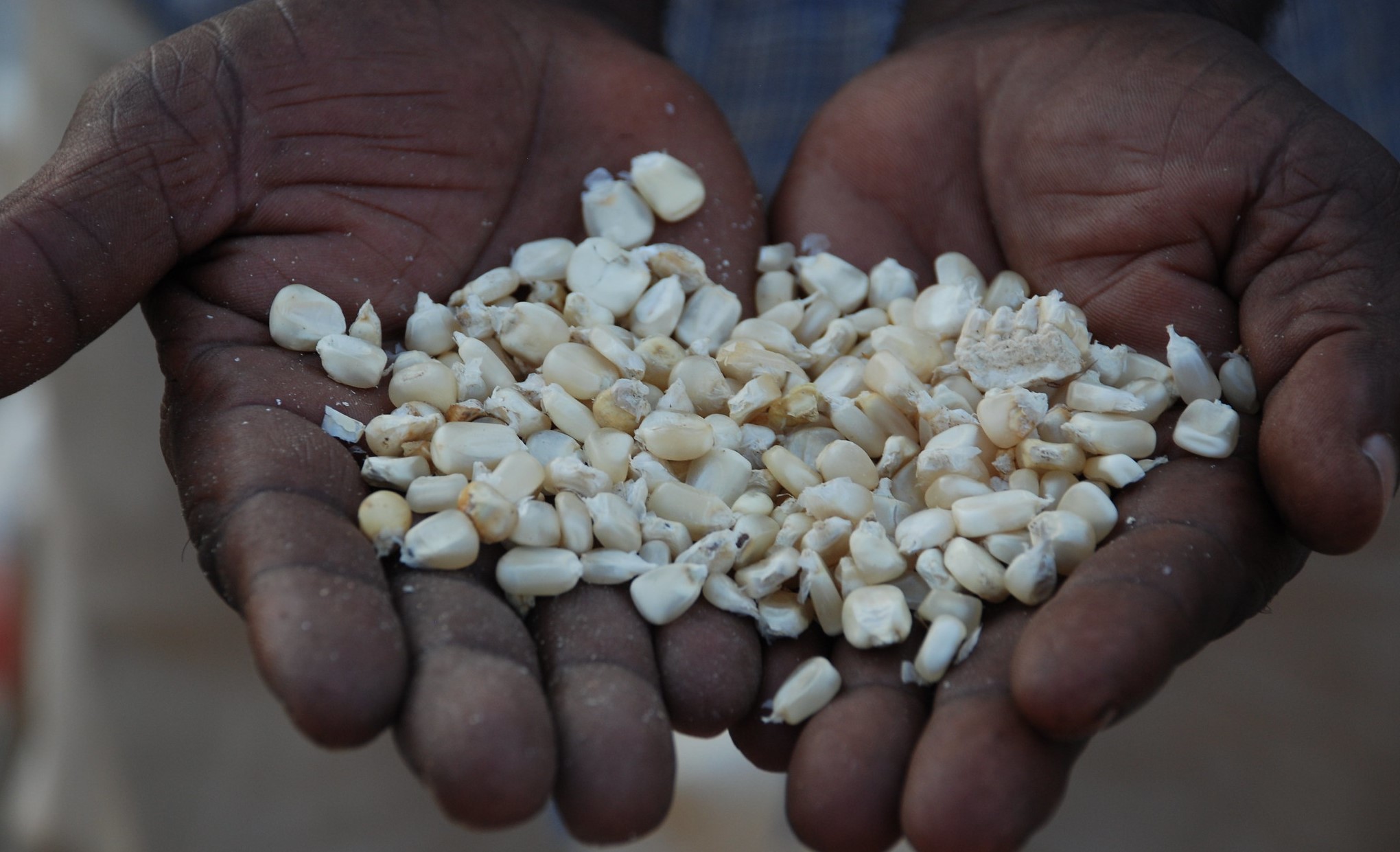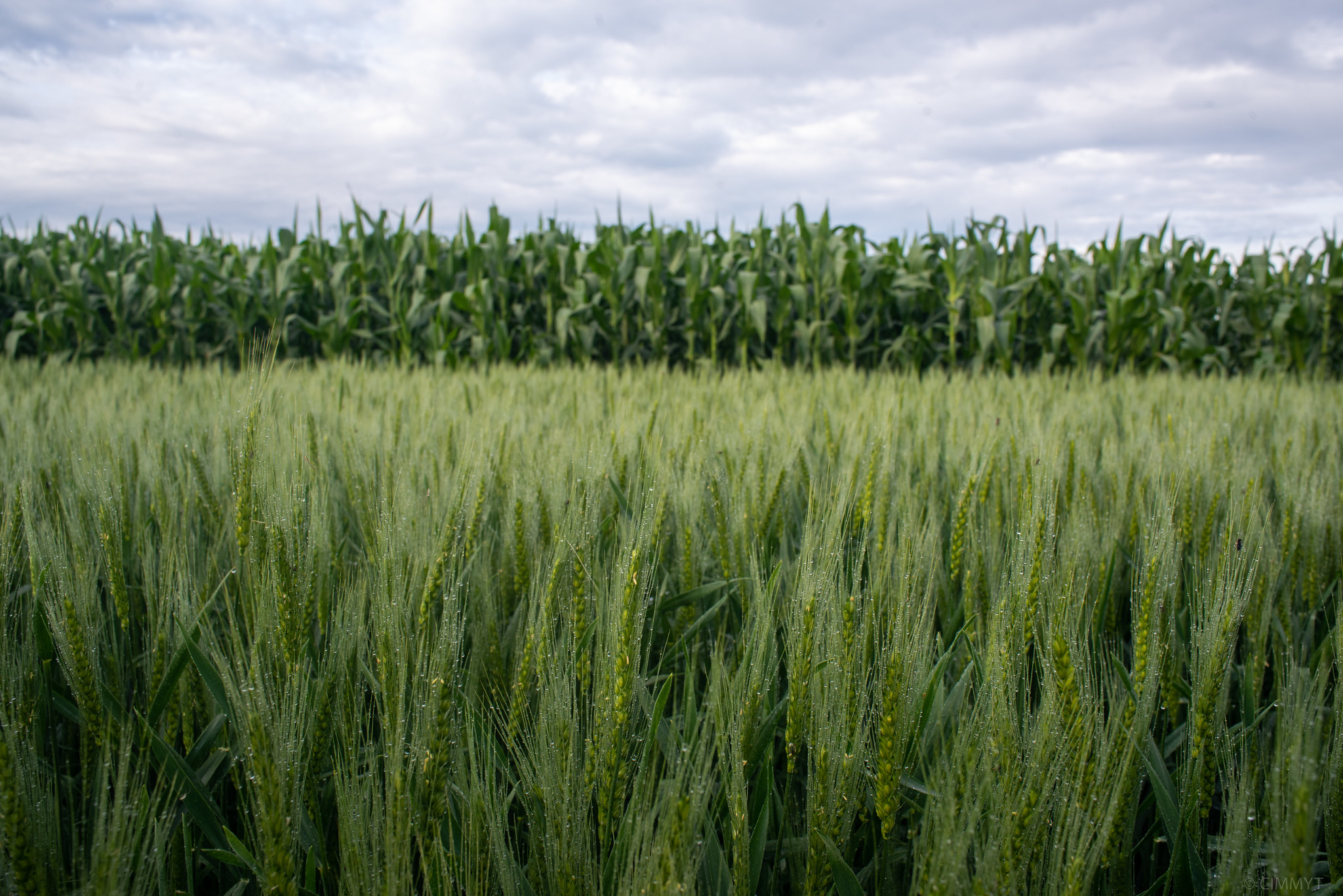Nancy Wawira strolls through a small plot of maize at Kithimu, in Kenya’s Embu County. She is charmed by the attributes of a maize variety that can yield 2,700kg per acre or more. The variety can endure drought-like conditions, matures in less than 120 days and has potential for double-cobbing.
Wawira is visiting a demonstration farm to witness the performance of several high yielding, early to medium maturing, drought-tolerant maize varieties.
By coming to this demonstration farm, Wawira hoped to identify a newer maize variety she could plant on her quarter-acre of land to get higher yield. The plot she stood on was the exact replica of what she was looking for. “Occasions such as this field day are very important for me and I always endeavor to attend them, as there is always something new to see or learn,” she says.
On her farm, she has been planting one of the old but popular commercial varieties suitable for this mid-altitude ecology. She normally harvests 4 bags of maize, of 90kg each, every season. However, if there is not enough rain or if there are pests or diseases, which is often the case, she harvests just 2 bags or less. This is hardly enough to meet her family’s food requirements for the year.
Switching to the maize variety she was interested in, and applying recommended farming practices, she could harvest 6 bags per season or more.
“Today, I have learnt how to improve my farming,” says Wawira. “Even when I access the variety that is high yielding, drought-tolerant and can mature in about three and a half months, as I witnessed on one of the plots, I still need to pay attention to proper crop husbandry related to spacing, timing of the planting, seed, fertilizer and pesticide application besides weed control,” she says.
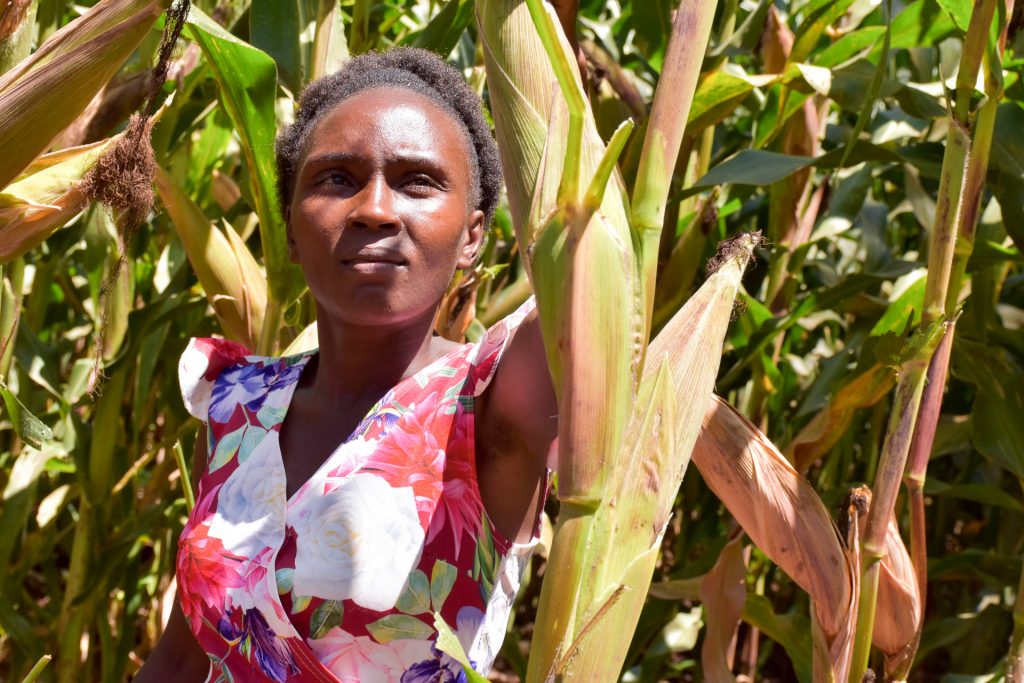
Made-to-order
Wawira was one of the more than 400 farmers from nearby Manyatta sub-county visiting the demonstration farm on February 7, 2020. They were able to see varieties and learn about their traits, invited by the Seed Trade Association of Kenya (STAK) with the support of the International Maize and Wheat Improvement Center (CIMMYT).
The demonstration is a continuation of the work started under the Drought Tolerant Maize for Africa Seed Scaling (DTMASS) project and later under the Stress Tolerant Maize for Africa (STMA) project.
Officials from Embu County, led by its minister in charge of agriculture Jamleck Muturi, were present during the farmers’ visit. Ten seed firms, some of which use CIMMYT’s germplasm for seed propagation and marketing, participated as well.
“Several of our member seed companies are showcasing the varieties developed through CIMMYT’s breeding pipeline,” said Duncan Ochieng’, the chief executive officer of STAK. “The maize varieties showcased on these demo farms were designed to be drought-tolerant, high yielding and range from early to medium maturing. These varieties are juxta-posted with other commercial varieties suitable for this region.”
During visits to demonstration farms, farmers give feedback on their variety preferences. Seed companies can then align their breeding, germplasm-access requests, seed production or marketing plans with farmers’ expectations.
Dire traits
Farming stresses such as pests, diseases, heat and drought have made targeted breeding a critical necessity.
Young farmers are increasingly choosing varieties that can mature faster, typically in less than three months. They also favor varieties that offer higher yield than the popular commercial varieties, many of which have been on the market for at least a decade. Other sought-after traits are good performance in low or erratic rains, tolerance to maize lethal necrosis, reduced lodging, and efficiency in nitrogen use.
Jackline Wanja, 25, relies on her one-acre farm for survival. “On average, I harvest about 25 bags per acre. On the demo farm, I got to know of a variety than can yield at least 30 bags per acre. I also learnt that the variety is not only drought-resilient but can also mature in about three and a half months. This is the variety that I plan to plant my farm next season,” Wanja said.
For John Njiru, 52, a higher-yielding variety with a lot of foliage, which remains green even after the maize cob has dried, is what he came looking for. For this farmer with 12 acres of land, the green maize foliage is a significant source of income when sold to livestock keepers. Njiru feeds his own livestock with it, making substantial savings on animal feed expenditure. “If this variety is as high yielding as I have been made to understand and can offer me at least 30 bags per acre, I would be a happy farmer. My farming would be very profitable,” he says.
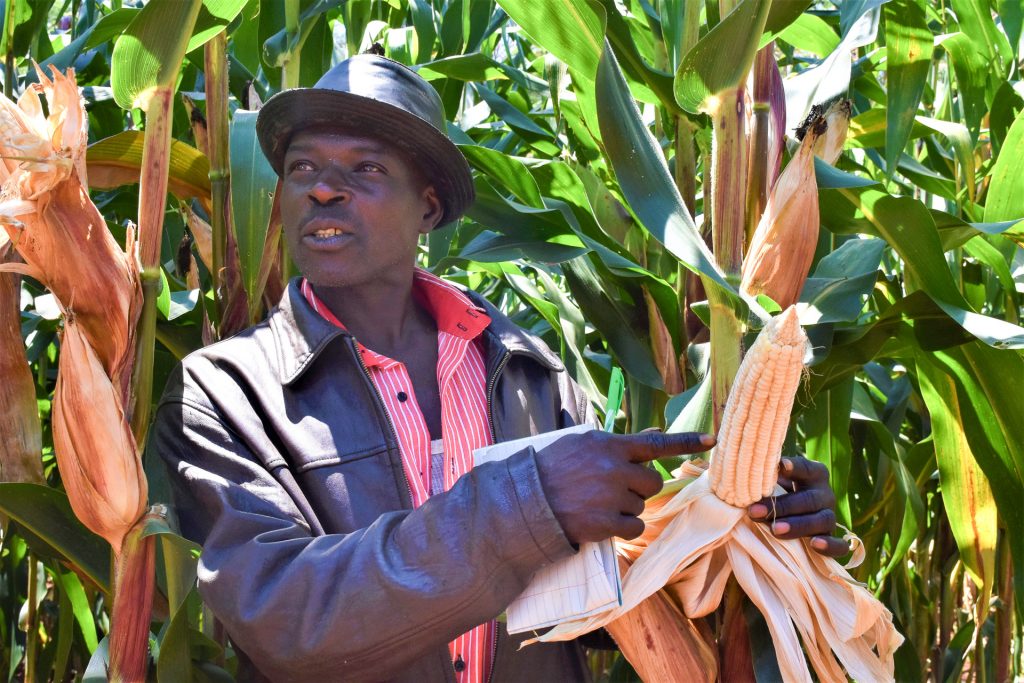
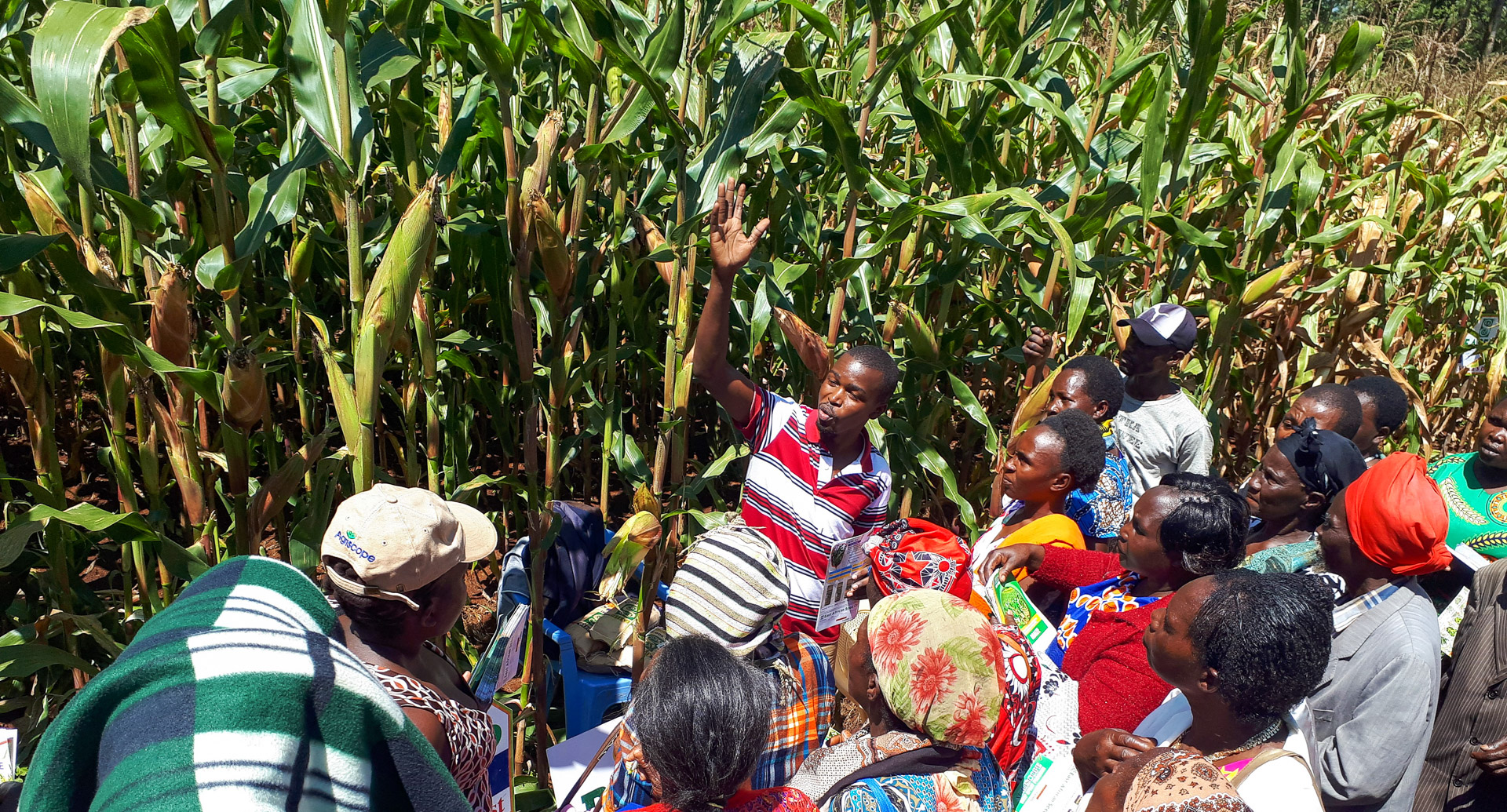
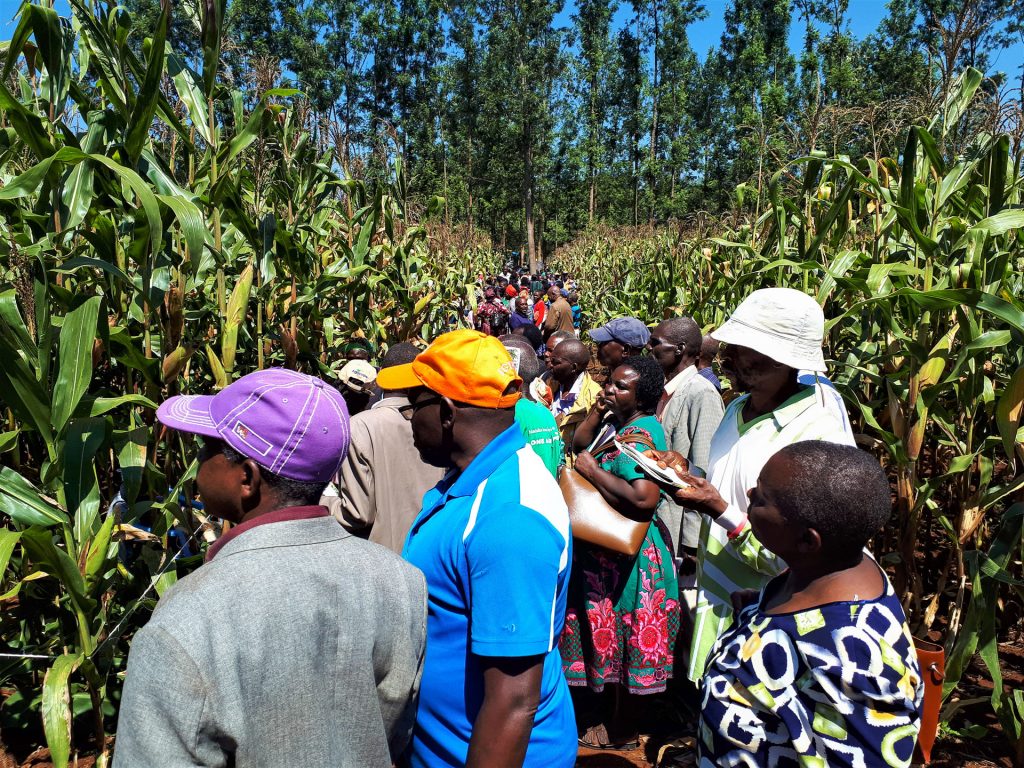
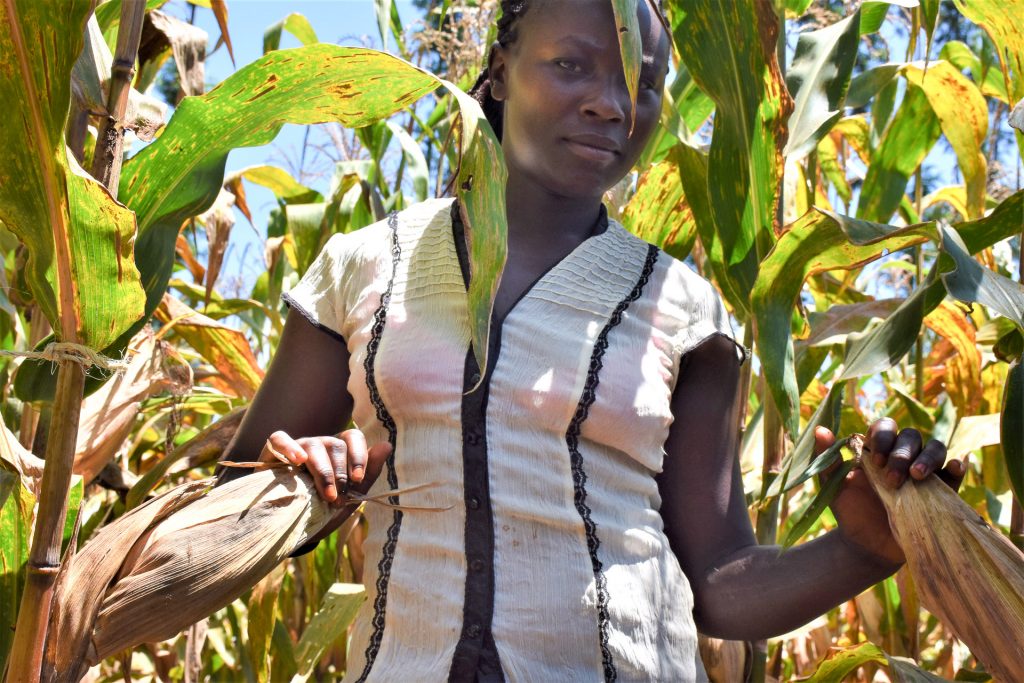
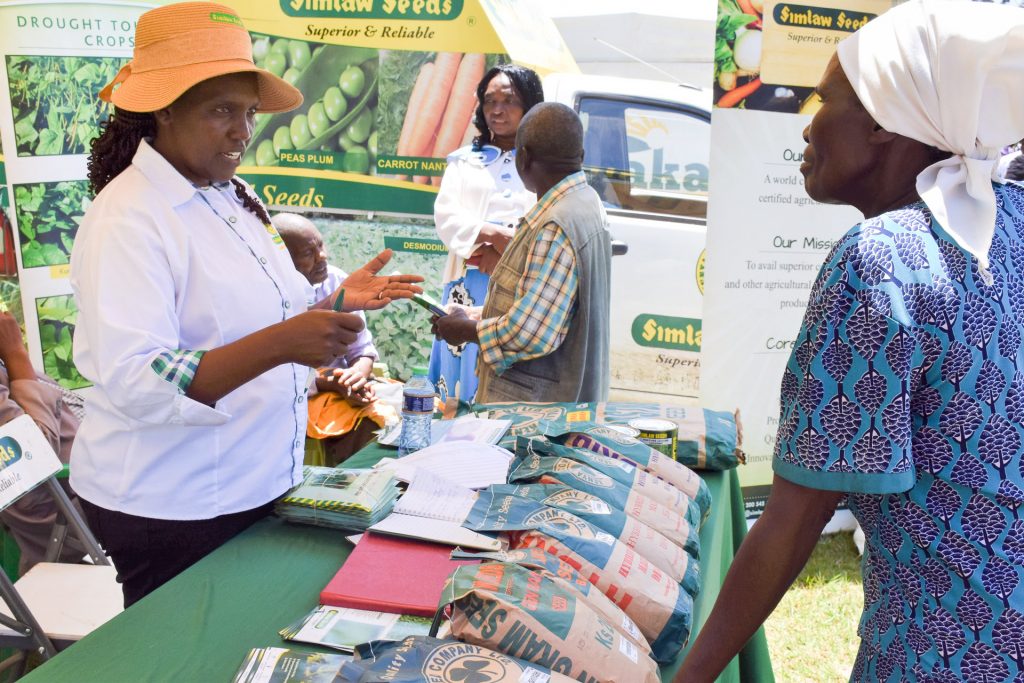
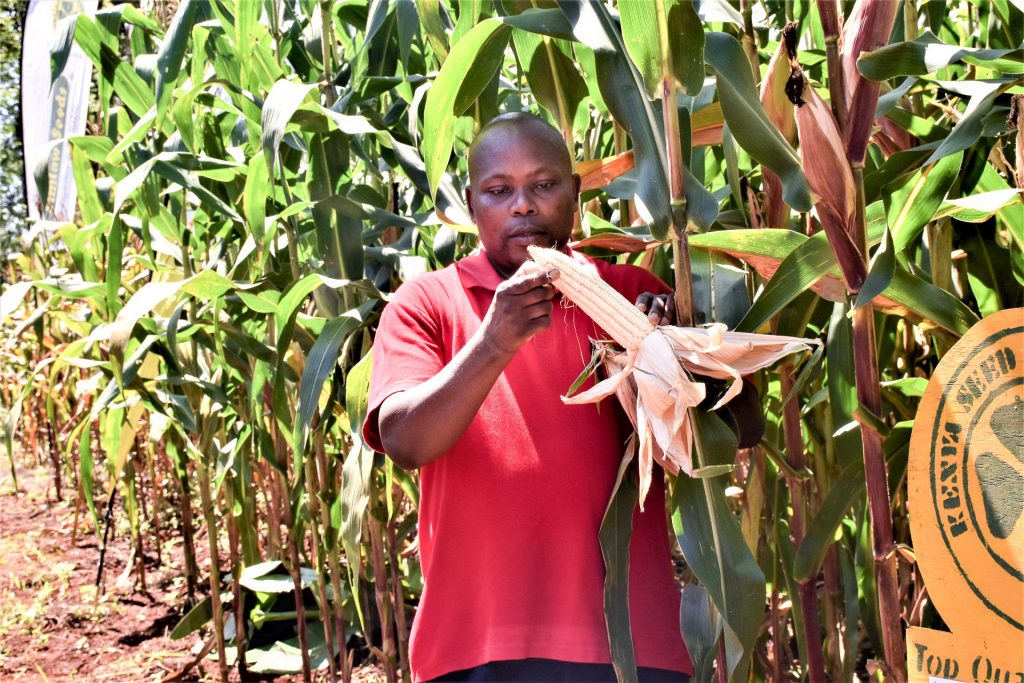
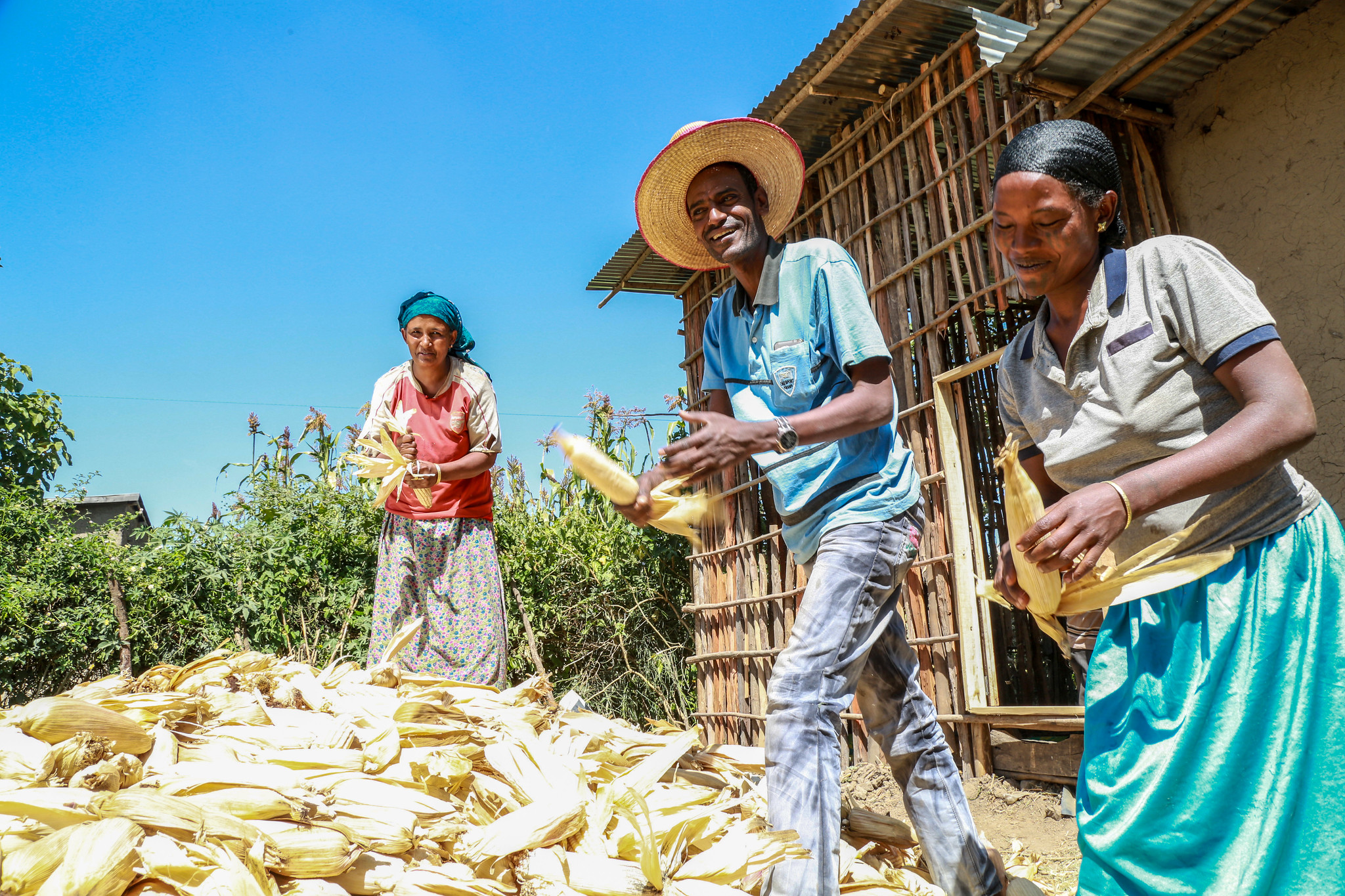
 Innovations
Innovations 